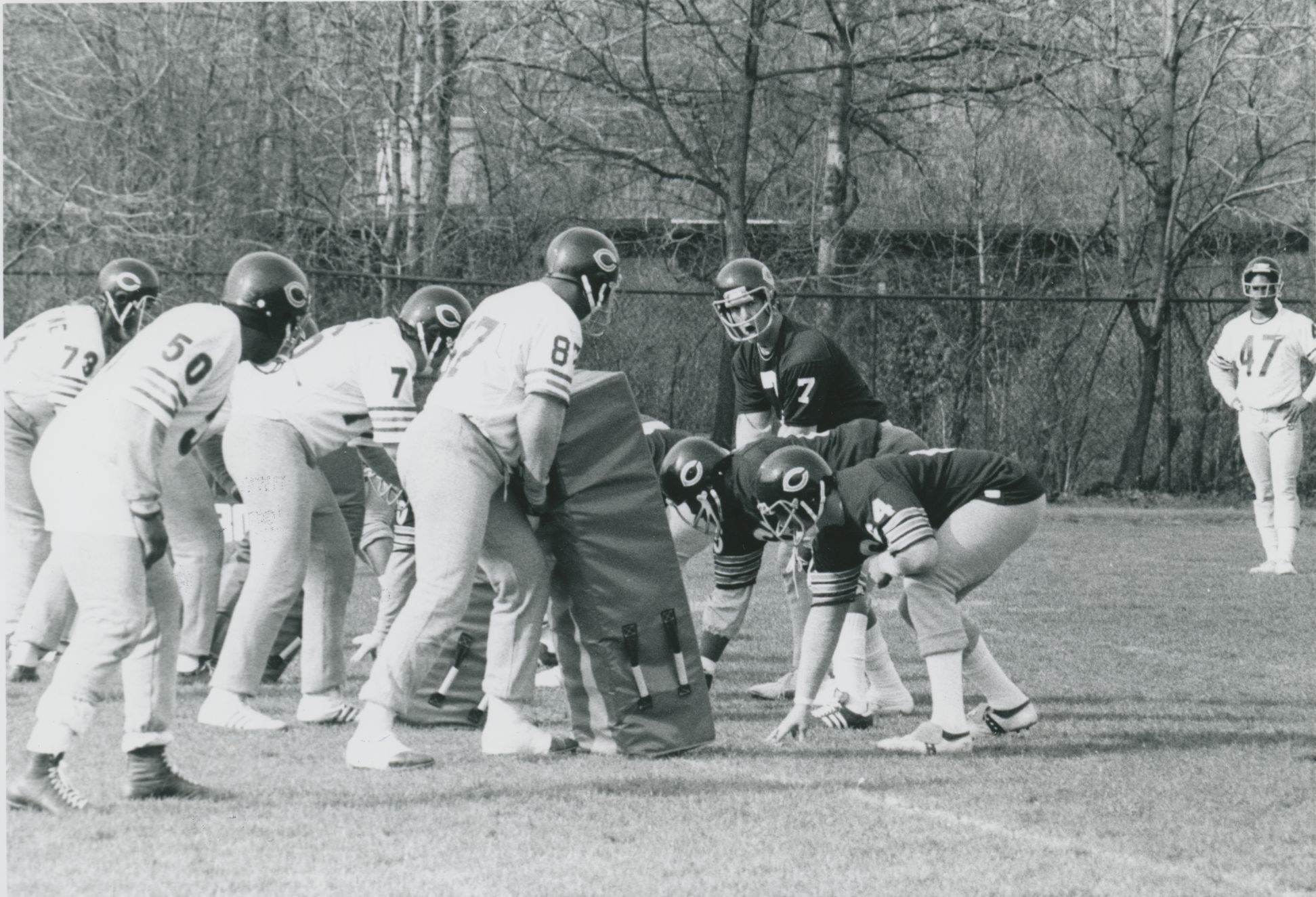Bearing Down on Lake Forest - The Chicago Bears Come To Town

After six straight losing seasons, new Chicago Bears manager Jim Finks was looking to change the culture of the franchise – and that included finding an alternative to dilapidated practice facilities at the old Soldier Field. “We’re actively looking [for a place] that will provide a climate for winning football,” Finks said in 1975.

Since the Chicago and later St. Louis Cardinals had used Lake Forest College, the city was an obvious solution even though the team first settled for the vacant girls’ boarding school at Ferry Hall. With the community already accustomed to hosting a team, the arrival of the Bears posed fewer adjustments.

Becoming the home of the Bears raised the profile of the college and added a new building, the original Halas Hall (1979). But the team had to share practice fields with LFC athletics and often had to migrate a few blocks to South Park to find an open or usable field.

Not only was the Chicago Bears’ new 1970s training facility nestled in the heart of a college campus, but it also bordered a residential neighborhood. Students mostly relished the proximity and the notoriety it brought to the school, delighting in encounters with Bears jogging on campus or rehabbing in the pool.

A few homeowners raised concerns about the fitness of the building for the area, even threatening litigation to prevent construction. Halas Hall went up; although most neighbors enjoyed the activity and opportunities to glimpse talented athletes, some of those concerns remained. Fans and spectators routinely flouted parking restrictions. The 25 mph speed limit proved challenging for the players and their brand-new, zippy cars.




The 1980s Bears knew how to have fun, whether it was “Super Bowl Shuffle”-ing or pranks to break up the grind of long days of practice. Some of the players’ antics were seen with less amusement by their Lake Forest neighbors, who were not thrilled to be surprised by a helicopter landing in their backyards one summer evening – Super Bowl or no Super Bowl.

The short distance to downtown meant that businesses like The Lantern and Egg Harbor Café had a new customer base – and one that could bring in big orders. “The Fridge [defensive lineman William Perry] always says he is on a diet,” said Lantern owner Don Tiffany in 1993. “He is cut down to one burger when he comes here.”
Lake Forest Hospital became a home base for treating Bears athletes – and coaches, following coach Mike Ditka’s heart attack in 1988. Staff physician Dr. Clarence H. Fossier served as the Bears team physician in the 1980s.

Lake Forest College remained the home of the Bears for nearly 20 years. The team acquired a 37-acre parcel of land to the west that was annexed to Lake Forest and built a larger, state-of-the-art Halas Hall in 1997. A number of factors drove the move, including desires for more modern facilities, easy access to the expressway, increased privacy and to become more competitive in free agency.

When the Bears relocated to the new Halas Hall in west Lake Forest, students and business owners bemoaned the move; homeowners were more sanguine. And some were all for it: “It’s much better for the neighborhood and the Bears,” said Lake Forest Police Chief Bob Boone in 1997.
Though the nature of an NFL career can pinball players and coaches across the country, over the years a few Bears have made their own homes here as well.
Beyond the draw of a short commute to Halas Hall, part of the area’s attraction is the residents’ and business owners’ desire to respect their privacy. Even when the players were training at Lake Forest College, residents may have come to glimpse them on the field, but let them be when they weren’t on the job.
''They're here to eat, not sign autographs. I try to make sure no one bothers them. I`ll cut people off if they look like they`re going to bother the Bears.'' said Don Tiffany, owner of the Lantern Restaurant, in a 1982 interview with the Chicago Tribune.
In an interview with the Lake Forester in 2018, guard Kyle Long said, “My favorite part of living in Lake Forest is you don’t ever have to leave Lake Forest. You can get the whole Chicago experience. I love it here; it has been my home for six years. The people are great, they have an amazing Starbucks and all in all, nice folks and the privacy is nice.”
